In motor work people try new ideas with permanent magnets.
In 1979 Donald Kelly made this new type of motor with magnets.
Design was special, easy to build and uses magnets in smart way.
This article talk about Exploring Free Energy Concepts in Permanent Magnet Motors.
Below lets explore the concept of permanent magnet motor with free energy:
In 1979 Donald Kelly made engine with magnets.
He says motor turn slow and magnets are hard to move.
To fix he used small motors to help move magnets.
This made motor easy to understand.
His way is same like Stephen Kundel who use coils to move magnets.
Kelly wants to use small electricity and get more power from magnets so motor spins faster and stronger.
Kellys Magnet Motor Design:
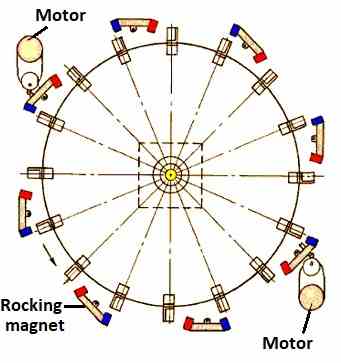
Kellys Magnet Motor:
Kelly motor have eight moving magnet groups.
First they pull spinning part.
When slow down the magnets move to new place.
Then they stop pull and start push.
Motor spin from push and pull.
Magnets give power so helper motors use little electricity.
We can use coils instead of helper motors.
If motor make enough power then maybe it can run itself.
Add more magnet layers to make stronger.
Mike Bradys “Perendev” Magnet Motor:
Mike Brady made a magnet motor called “Perendev.”
It made many people curious.
Some say many of these motors were made and sold by giving at least 100 kW power.
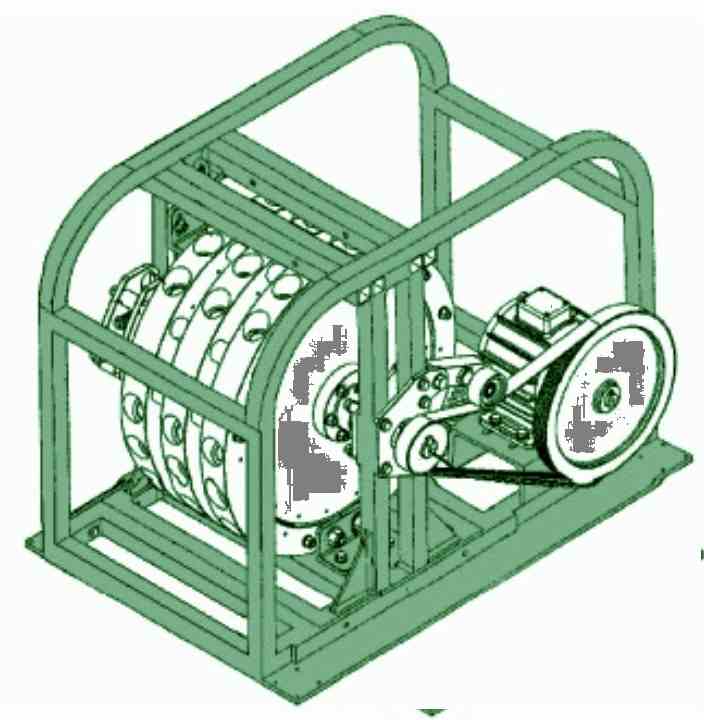
Problems with Bradys Perendev Motor:
Only Sterling Allan did small test but no one else said anything about it works.
Making motor run only with magnets is very hard.
Better to start with motors that move magnets or use special cover like Adams or Charles Flynn motor.
Bradys Motor Issues:
Bradys motor uses rare and costly magnets which are hard to find.
He also needs special cover to protect magnets.
By 2010 he can’t sell motor good, this made investors unhappy.
If Brady can’t build motor again then beginners should try simple motors like from Don Kelly, Stephen Kundel, Charles Flynn, Robert Tracy or Jines.
These motors use moving magnets or covers.
Blocking Magnetic Fields:
Pasi Makila from Finland found a way to block magnetic force using normal materials.
He covered a round magnet with layers of aluminum and flat steel.
This blocked most of the magnetic field.
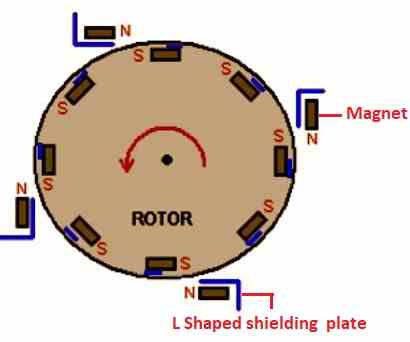
Makilas Magnetic Cover Idea:
Makila says use 4 steel layers with aluminum between and maybe more aluminum outside.
This cover can stop motor magnets from spin backward.
In this motor the standing magnet north pulled by spinning magnet south.
When south pass north then cover stop magnet from pulling back.
Side cover on spinning magnet also stop magnets push each other.
This is just an idea now which is not built yet.
Two Motors That Spin:
Fridge magnets stick because fridges are made of steel which reacts with magnets.
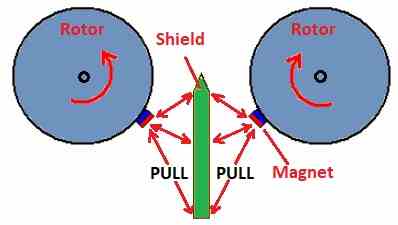
Important Note About Steel and Iron:
This is important when we use steel or iron to block magnets.
Steel and iron can become magnet too.
If magnet is fully covered with steel then other magnets still get pulled to it.
Two Magnet Gears Idea:
Idea use two gears with magnets on them.
Metal shield goes in middle of gears.
Magnets spin when they touch shield.
To make it easy diagram show only one magnet pair.

How the Metal Shield Works:
Metal shield pull each magnet and make rotors turn same way as red arrows.
Normally when magnets match with shield the rotors stop.
But idea is to change shield shape and make it thin at end.
Thin part help back magnet pull line up with front magnet.
At shield tip the push and pull is cancelled with no force happen there.
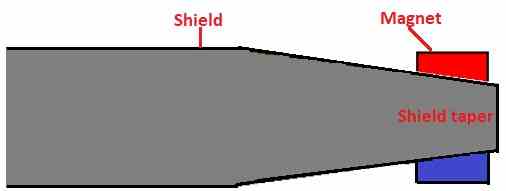
To find good shape for taper shield we need testing.
It depend on magnet power, shield size, material and space between parts.
Shield tip has neutral zone with no strong pull so rotors can keep spinning after the shield.

When magnets go outside the shield they push each other hard.
This push make rotors turn.
One magnet pair can make spin and more magnets make it stronger.
We can put one more magnet pair same place to see how shield pull and magnet push work together.
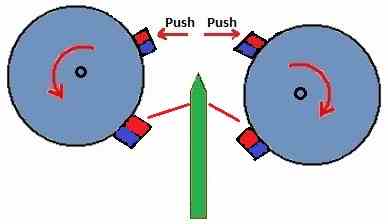
Magnet Motor with Shield Setup:
In this setup rotors may spin all time.
To stop it just take out the shield.
Magnets set in repulsion mode and same poles face each other.
But repulsion can make magnets weak after some time.
This design does not use attraction mode but it is easy to remove magnets.
Attraction mode is better and magnets stay strong and easy to change or fix.
Conclusion:
In this post about Exploring Free Energy Concepts in Permanent Magnet Motors many people try to make free energy using magnets.
Kelly use small motors to help magnets spin.
Bradys motor is strong but hard to test.
Makila have idea to stop magnets move backward.
Some motors use magnet push to keep spinning.
These ideas are not perfect but good to learn and test.
Leave a Reply